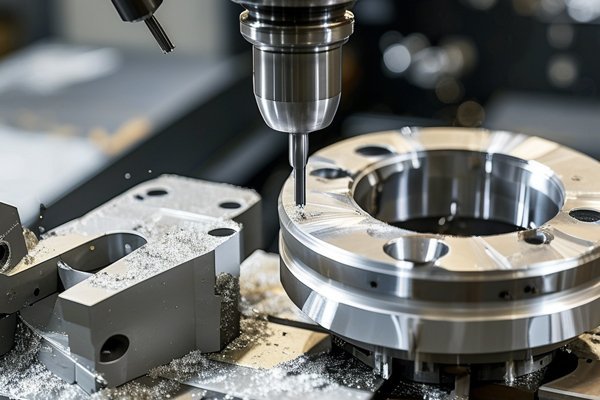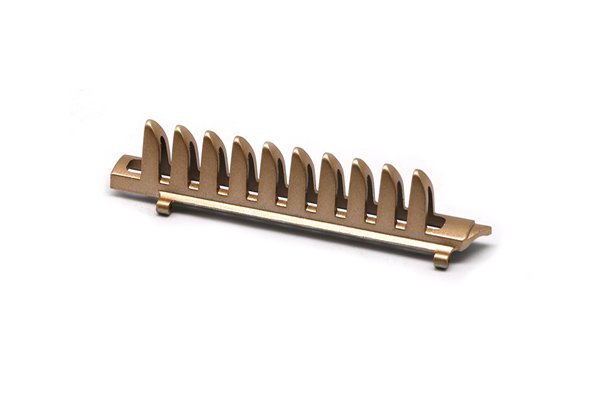Did you know that approximately 80% of machining errors arise from limitations in the machine’s axes of movement? This startling statistic underscores the importance of advanced machining techniques in optimizing production processes. As industries continue to evolve, the need for precision, efficiency, and customization has never been greater. If you’re part of the manufacturing sector or are dependent on custom tooling solutions, understanding how 4-axis machining can transform your operations is essential.
In this blog, we will explore the numerous benefits of 4-axis machining in enhancing custom tooling, diving into its mechanics, applications, advantages, and how it can overcome common challenges in the machining process. By the end, you will have a comprehensive understanding of why this technique is critical for elevating your business capabilities and driving success.
What is 4-Axis Machining?
4-axis machining refers to the use of a rotary axis in addition to the three standard linear axes (X, Y, and Z) found in traditional CNC (Computer Numerical Control) machining. In essence, a 4-axis CNC machine allows for more complex geometries and intricate designs by offering rotational movement along the fourth axis.
How It Works
In 4-axis machining, the workpiece can rotate continually around the fourth axis. This allows a single setup of the part, reducing the time it takes for the machine to reposition or re-clamp the workpiece for multiple operations. Essentially, the fourth axis serves as a bridge, seamlessly integrating horizontal and vertical movements to produce intricate shapes and fine details without manual intervention.
The Benefits of 4-Axis Machining for Custom Tooling
Before we dive into specific applications, understanding the benefits will provide clarity on why incorporating 4-axis machining into your custom tooling processes is a game changer.
One of the most compelling benefits of 4-axis machining is its ability to produce highly detailed and complex parts with remarkable precision. The fourth axis allows the machine tool to reach angles and contours that a 3-axis machine might struggle with, significantly reducing tool marks and improving the overall finish.
Traditionally, machining a part often required multiple setups to complete different sides or angles. With 4-axis machining, you can complete multiple operations in a single setup, saving valuable time and reducing potential errors associated with repositioning.
The efficiency gained by using 4-axis machining translates into increased production rates. As parts can be machined more quickly and with fewer setups, businesses can increase output without needing to invest heavily in additional resources or labor.
While the initial investment in 4-axis CNC machines may be higher, the long-term savings in labor, material waste, and time can be substantial. This ultimately reduces costs and boosts profit margins, making it an attractive investment for manufacturers.
4-axis machining is not limited to one specific industry; it can be applied across various manufacturing sectors. From aerospace and automotive to medical and tooling, the versatility of 4-axis machines allows businesses to tailor their operations according to specific needs without switching between multiple machines.
Applications of 4-Axis Machining in Custom Tooling
Knowing the benefits of 4-axis machining is only part of the equation. The true value becomes apparent when looking at its applications. Here are some notable areas where 4-axis machining excels in creating custom tooling solutions:
In aerospace, precision is paramount. Components such as turbine blades and engine parts require intricate designs and high tolerances. 4-axis machining allows for comprehensive machining of these components, ensuring they meet stringent industry standards without compromising on quality.
4-axis machining can produce critical automotive components like custom gear housings, crankshafts, and intricate mold bases. The ability to achieve complex forms while maintaining precision makes it an excellent choice for automotive manufacturing.
Precision and sterility are integral in producing medical devices. Utilizing 4-axis machining, manufacturers can create complex parts for implants, surgical instruments, and diagnostic equipment with high precision and minimal contamination risks.
Custom tooling often requires specific geometries tailored to a particular application. The adaptability of 4-axis machining allows for the rapid prototyping of specialized tooling and fixtures, saving time in the product development cycle.

For manufacturers of unique machinery, 4-axis CNC allows the rapid production of a variety of components, irrespective of complexity. This flexibility helps to create custom machinery tailored to a client’s specifications efficiently.
Overcoming Challenges with 4-Axis Machining
While the benefits of 4-axis machining are significant, there are challenges to be aware of when integrating this technology into your operations. Addressing these challenges head-on can maximize the potential gains from incorporating 4-axis capabilities.
Though 4-axis machining reduces the number of required setups, the initial tooling and setup process can be more complex compared to traditional machining. To overcome this, investing in skilled technicians and training is essential. Ensuring that your workforce understands the intricacies of the machines will lead to smoother operations.
Adapting CAM (Computer-Aided Manufacturing) software to fully utilize the 4-axis capabilities can be challenging. Choosing the right software and ensuring compatibility with your existing systems will be crucial. Working with vendors who offer specialized support can alleviate many of these concerns.
The upfront costs of acquiring a 4-axis machine might deter some businesses. However, considering the long-term return on investment and total cost of ownership, including reduced labor and improved productivity, the initial costs may be justifiable.
4-axis machines, due to their added complexity, may require more maintenance than simpler CNC systems. Having a sound maintenance plan and access to skilled technicians will ensure that these machines operate efficiently with minimal downtime.
Core Techniques for Implementing 4-Axis Machining in Your Operation
To successfully implement 4-axis machining, consideration of specific techniques and strategies is crucial. Here are several core techniques to keep in mind:
Creating a detailed plan involves evaluating your current tooling processes, identifying potential applications for 4-axis machining, and determining how this new technique fits into your broader operational strategy.
Train your workforce consistently to keep them up-to-date with technological advancements and machining techniques. Skilled operators who understand the nuances of 4-axis machining bring a wealth of expertise to your production lines.
When considering 4-axis machines, select high-quality models from reputable manufacturers. The reliability of your machinery is key to achieving consistent output and maintaining competitive advantage.
Adopting cutting-edge CAM software tailored to 4-axis operations will enhance your machine’s capabilities. Invest in software that offers comprehensive simulation features to visualize and optimize the machining processes.
Establish a culture of continuous improvement where feedback on the machining process can lead to enhancements in both quality and efficiency. Analyzing production metrics, maintaining quality checks, and integrating emerging technologies will drive ongoing gains.
In today’s fast-paced manufacturing landscape, the importance of precision, efficiency, and customization cannot be overstated. By leveraging the capabilities of 4-axis machining, your business can streamline operations, reduce costs, and produce high-quality custom tooling solutions that stand out in a competitive market.
Understanding the mechanics of 4-axis machining is the first step. Implementing its techniques strategically into your operations may require an investment in training, software, and machinery, but the long-term rewards are well worth it.
As we have explored, 4-axis machining isn’t just a technological trend; it represents a significant advancement that, when harnessed, can elevate your business capabilities exponentially. Don’t overlook the opportunity to incorporate this sophisticated technology into your manufacturing processes. Embrace 4-axis machining and position your business at the forefront of the industry, navigating the complexities of custom tooling with unmatched precision and efficiency.






